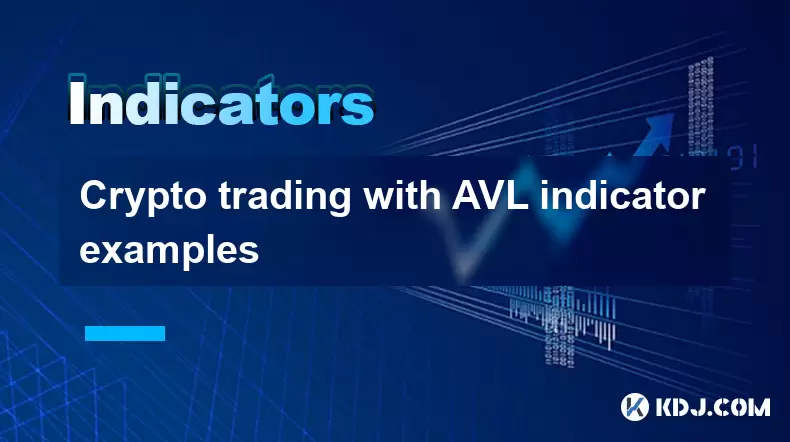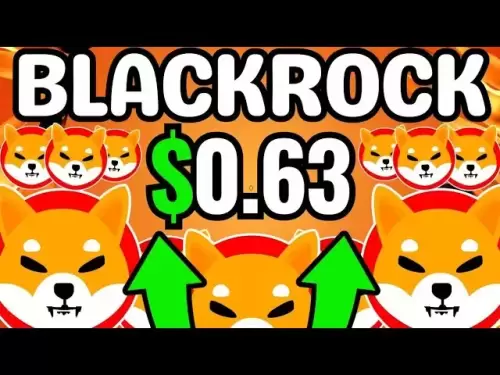-
 Bitcoin
Bitcoin $117900
-0.22% -
 Ethereum
Ethereum $3620
1.45% -
 XRP
XRP $3.392
-1.67% -
 Tether USDt
Tether USDt $1.001
-0.01% -
 BNB
BNB $741.5
1.66% -
 Solana
Solana $177.7
0.35% -
 USDC
USDC $0.9999
0.00% -
 Dogecoin
Dogecoin $0.2524
4.26% -
 TRON
TRON $0.3190
-1.74% -
 Cardano
Cardano $0.8331
1.49% -
 Hyperliquid
Hyperliquid $44.73
-0.94% -
 Stellar
Stellar $0.4609
-0.52% -
 Sui
Sui $3.844
2.54% -
 Chainlink
Chainlink $18.54
2.73% -
 Hedera
Hedera $0.2685
2.60% -
 Bitcoin Cash
Bitcoin Cash $522.6
1.91% -
 Avalanche
Avalanche $24.57
4.49% -
 Shiba Inu
Shiba Inu $0.00001508
2.57% -
 Litecoin
Litecoin $111.2
9.56% -
 UNUS SED LEO
UNUS SED LEO $8.989
0.15% -
 Toncoin
Toncoin $3.185
-0.08% -
 Polkadot
Polkadot $4.391
3.82% -
 Uniswap
Uniswap $10.34
3.56% -
 Monero
Monero $327.3
1.09% -
 Ethena USDe
Ethena USDe $1.001
-0.02% -
 Bitget Token
Bitget Token $4.953
1.19% -
 Pepe
Pepe $0.00001351
2.67% -
 Dai
Dai $1.000
0.01% -
 Aave
Aave $320.9
0.41% -
 Bittensor
Bittensor $415.9
1.00%
Crypto trading with AVL indicator examples
The AVL indicator combines price and volume data to help crypto traders identify trends, reversals, and strong breakouts by showing buying or selling pressure through color-coded bars.
Jul 19, 2025 at 06:50 pm

Understanding the AVL Indicator in Crypto Trading
The AVL indicator, also known as the Advanced Volume Liquidity indicator, is a powerful tool used by cryptocurrency traders to assess market liquidity and volume behavior. Unlike traditional volume indicators that simply measure trading volume over time, the AVL indicator incorporates price action and volume together to give a more nuanced view of buying and selling pressure. This makes it especially useful in volatile crypto markets where sudden spikes and dips are common.
In essence, the AVL indicator helps traders identify potential reversals, confirm trends, and filter out false signals. It works by analyzing how volume interacts with price changes — for example, if a cryptocurrency's price rises but volume decreases, it may indicate weakening momentum. Conversely, increasing volume during a breakout can suggest strong institutional or whale activity.
How the AVL Indicator Works in Practice
The AVL indicator typically appears below the price chart and consists of bars or lines that represent different aspects of volume and liquidity. These visual elements are usually color-coded:
- Green bars signify accumulation or buying pressure.
- Red bars represent distribution or selling pressure.
- The height of each bar reflects the intensity of the volume at that particular price level.
One key feature of the AVL indicator is its ability to highlight divergences between price and volume. For instance, if Bitcoin’s price reaches a new high but the AVL bar is shorter than the previous high, this could signal an upcoming bearish reversal.
Another practical use is confirming breakouts. When a cryptocurrency breaks through a resistance level and the AVL indicator shows a surge in green volume, it confirms the strength behind the move. Traders often wait for such confirmation before entering a trade to avoid falling into a false breakout trap.
Setting Up the AVL Indicator on Trading Platforms
To begin using the AVL indicator, you first need to set it up on your preferred trading platform. Most platforms like TradingView, MetaTrader 4/5, or Binance's native tools support custom indicators or have built-in versions.
Here’s how to add the AVL indicator on TradingView:
- Log into your TradingView account and open a chart.
- Click on the "Indicators" button located at the top of the screen.
- Search for "AVL" or "Advanced Volume Liquidity" in the public library.
- Select the appropriate script and click "Add to Chart".
- Customize settings such as colors, thresholds, and display options according to your preference.
Once applied, the AVL indicator will automatically appear beneath the main price chart. You can adjust the parameters based on your trading style — for day trading, a shorter period setting might be better, while swing traders may prefer longer periods for smoother signals.
Using the AVL Indicator for Entry and Exit Points
Traders often combine the AVL indicator with other technical analysis tools like moving averages or RSI to pinpoint optimal entry and exit points.
For example, consider a scenario where Ethereum (ETH) has been consolidating within a range. Suddenly, the AVL indicator starts showing long green bars, indicating increased buying pressure. If this coincides with a bullish crossover on the MACD or a breakout above a key resistance level, it can serve as a strong buy signal.
Conversely, when ETH is trending upwards and the AVL indicator begins to show red bars despite rising prices, it may indicate that large players are distributing their holdings — a sign that the trend might reverse soon.
Exit strategies can also benefit from the AVL indicator. Suppose you're holding Litecoin (LTC) and notice a sharp decline in AVL volume after a prolonged rally. That could be a warning sign to take profits or tighten stop-loss orders before a potential pullback.
Real-Life Examples of AVL Indicator Usage in Crypto Trading
Let’s examine two real-world examples of how the AVL indicator helped traders make informed decisions during significant crypto events.
Example 1: Bitcoin Pump in Early 2024
During January 2024, Bitcoin experienced a sharp rally driven by ETF news. On many charts, the AVL indicator showed consistently rising green bars throughout the uptrend. However, around February 1st, the green bars began shrinking even though the price continued climbing. This divergence suggested that the rally was losing steam. Traders who noticed this early warning had the chance to secure profits before the subsequent 15% correction.
Example 2: Solana Correction After Altseason Surge
In mid-March 2024, Solana (SOL) surged due to renewed interest in altcoins. As SOL approached $200, the AVL indicator started showing red volume spikes, signaling heavy selling pressure. Those who acted on this signal exited their positions ahead of a major drop to $160.
These examples illustrate how the AVL indicator can provide actionable insights when interpreted correctly alongside broader market conditions.
Frequently Asked Questions (FAQs)
Q: Can the AVL indicator be used across all cryptocurrencies?
Yes, the AVL indicator is applicable to any tradable asset, including all major and minor cryptocurrencies. However, its effectiveness may vary depending on the asset's liquidity and trading volume.
Q: Is the AVL indicator reliable on lower timeframes like 5-minute or 15-minute charts?
While the AVL indicator can be applied to lower timeframes, it tends to generate more noise and false signals. It is generally more effective on higher timeframes such as 1-hour, 4-hour, or daily charts, especially for confirming trends and major moves.
Q: How does the AVL indicator differ from standard volume indicators?
Unlike standard volume indicators that only measure total volume per candle, the AVL indicator combines volume with price action to reflect liquidity and participation levels. This allows traders to distinguish between healthy rallies and unsustainable pump attempts.
Q: Can I automate trading using the AVL indicator?
Yes, advanced traders can integrate the AVL indicator into algorithmic trading systems using platforms like TradingView Pine Script, Python with Binance API, or MetaTrader Expert Advisors (EAs). However, backtesting is crucial to ensure reliability before live deployment.
Disclaimer:info@kdj.com
The information provided is not trading advice. kdj.com does not assume any responsibility for any investments made based on the information provided in this article. Cryptocurrencies are highly volatile and it is highly recommended that you invest with caution after thorough research!
If you believe that the content used on this website infringes your copyright, please contact us immediately (info@kdj.com) and we will delete it promptly.
- WLFI Token Trading Approved: From Trump Ties to Community Votes
- 2025-07-20 09:10:12
- CoinDCX's $44.2 Million Security Breach: A Wake-Up Call for Crypto Exchanges
- 2025-07-20 08:30:13
- Trump, WLFI, and Token Release: A New York Minute on Crypto
- 2025-07-20 08:30:13
- Ripple's RLUSD: The Bluechip Stablecoin Set to Disrupt the Market?
- 2025-07-20 08:50:11
- Bitcoin Price Action: Is Weakening Demand on the Horizon?
- 2025-07-20 08:50:11
- Ripple's RLUSD: Top-Ranked Stablecoin Shaking Up the Market
- 2025-07-20 08:55:12
Related knowledge

Advanced RSI strategies for crypto
Jul 13,2025 at 11:01am
Understanding the Basics of RSI in Cryptocurrency TradingThe Relative Strength Index (RSI) is a momentum oscillator used to measure the speed and chan...

Crypto RSI for day trading
Jul 12,2025 at 11:14am
Understanding RSI in the Context of Cryptocurrency TradingThe Relative Strength Index (RSI) is a momentum oscillator used to measure the speed and cha...

Crypto RSI for scalping
Jul 12,2025 at 11:00pm
Understanding RSI in the Context of Crypto TradingThe Relative Strength Index (RSI) is a momentum oscillator widely used by traders to measure the spe...

What does an RSI of 30 mean in crypto
Jul 15,2025 at 07:07pm
Understanding RSI in Cryptocurrency TradingRelative Strength Index (RSI) is a momentum oscillator widely used in cryptocurrency trading to measure the...

What does an RSI of 70 mean in crypto
Jul 13,2025 at 06:07pm
Understanding the RSI Indicator in Cryptocurrency TradingThe Relative Strength Index (RSI) is a widely used technical analysis tool that helps traders...

Does RSI work in a bear market for crypto
Jul 16,2025 at 01:36pm
Understanding RSI in Cryptocurrency TradingThe Relative Strength Index (RSI) is a momentum oscillator used by traders to measure the speed and change ...

Advanced RSI strategies for crypto
Jul 13,2025 at 11:01am
Understanding the Basics of RSI in Cryptocurrency TradingThe Relative Strength Index (RSI) is a momentum oscillator used to measure the speed and chan...

Crypto RSI for day trading
Jul 12,2025 at 11:14am
Understanding RSI in the Context of Cryptocurrency TradingThe Relative Strength Index (RSI) is a momentum oscillator used to measure the speed and cha...

Crypto RSI for scalping
Jul 12,2025 at 11:00pm
Understanding RSI in the Context of Crypto TradingThe Relative Strength Index (RSI) is a momentum oscillator widely used by traders to measure the spe...

What does an RSI of 30 mean in crypto
Jul 15,2025 at 07:07pm
Understanding RSI in Cryptocurrency TradingRelative Strength Index (RSI) is a momentum oscillator widely used in cryptocurrency trading to measure the...

What does an RSI of 70 mean in crypto
Jul 13,2025 at 06:07pm
Understanding the RSI Indicator in Cryptocurrency TradingThe Relative Strength Index (RSI) is a widely used technical analysis tool that helps traders...

Does RSI work in a bear market for crypto
Jul 16,2025 at 01:36pm
Understanding RSI in Cryptocurrency TradingThe Relative Strength Index (RSI) is a momentum oscillator used by traders to measure the speed and change ...
See all articles

























































































